How can we help?
Exposure Report
Available on Sharesight Starter, Standard, Premium and Sharesight Business plans.
Embedded content: https://www.youtube.com/watch?v=w5RjKvX44-Q&t=182s
Introduction
The Exposure Report shows the underlying holdings within your ETFs (Exchange traded funds), showing you the true composition of your investments. If you own multiple ETFs, it also identifies any overlapping holdings, giving you a clear picture of your overall exposure, including your direct investments.
Why is it important
Understanding your underlying asset exposure is critical for risk management and portfolio diversification. It allows you to spread investments across diverse assets, minimizing overall portfolio risk. Accurate exposure knowledge also empowers you to proactively manage potential losses.
ETFs coverage
The report covers ETFs listed in AU, CA, NZ, UK, USA and EU markets.
How our customers use it
Avoid over-concentration on direct holdings
“It helps size investments in individual stocks in a mostly ETFs based portfolio. I don’t want individual stock purchases to decrease excessively diversification...So I can see from my exposure report that 1-3% for an individual stock purchase would not harm diversification”
Understand combined weighting from direct holding, and within each ETF
"Check combined weighting. Helps to see how concentrated i am in stocks, helps save me time working it out myself in excel"
Over-exposure to a specific stock i.e AAPL or group i.e FAANG
“To check overexposure to any specific stock. For example I have reduced direct holding in Apple as it is dominant in several ETFs”
Uncover hidden investments
"...fascinated that I have Brazilian Oil stocks . Its an eye opener. It has been interesting to see exactly how much Google, Meta and Apple shares I effectively have.”
Understand exposure to US market
"I realised I was overexposed to US market...decided to gradual move to ex US inc Australia”
"[Decided to buy] some overseas shares, GOOG, as underweight compared to other direct bought shares and the ETF...similarly with Microsoft, I intend to direct purchase some of them to move it into my top 10 holdings (combined direct and via ETF).”
Understand true exposure in banking industry
“Trying to work out if my mix of ETFs leaves me overexposed to over priced banks in Australia.”
Reduce overlap investments while improve return
“I use it to look mainly at my ETFs and if I have 2 or 3 that have 80 or say 70% overlap, I will dig a little deeper and look at their unique holdings and see if its worth keeping all of them with such a great amount of overlap. So far I've wound up just selling the one with the worst performance or highest fees and rolling that into the other.”
How to run the report:
1 — From any page click on the Report tab.

2 — Click the Exposure Report tile.
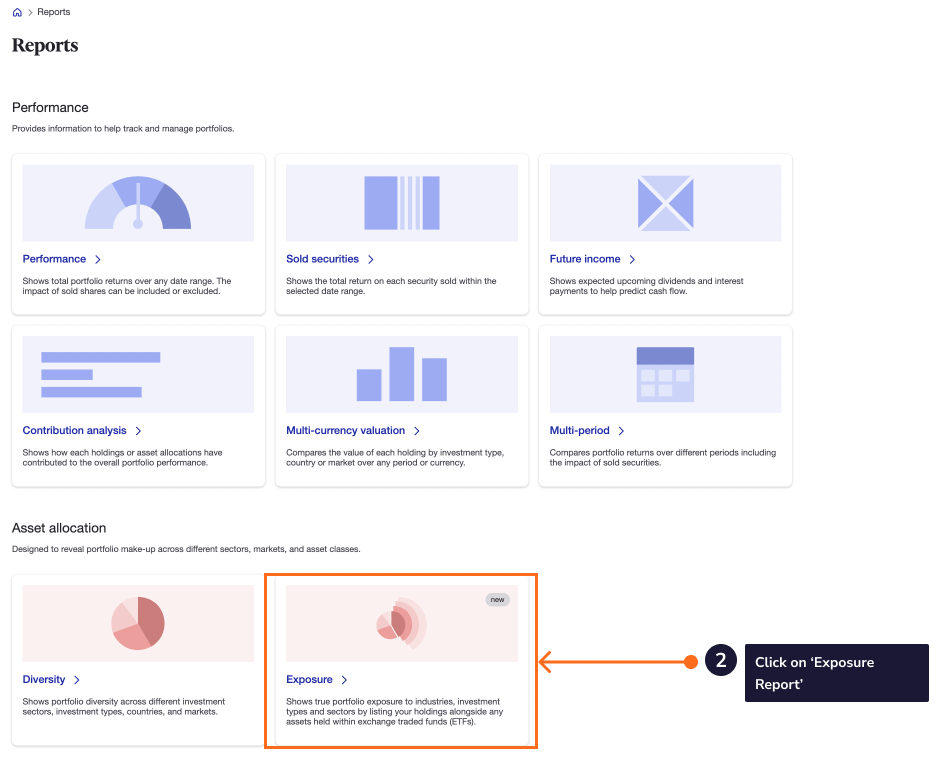
3 — Select the grouping you wish to view the diversity of your portfolio in:
- Market
- Currency
- Sector Classification
- Industry Classification
- Investment type
- Country
- Do not group (Holdings)
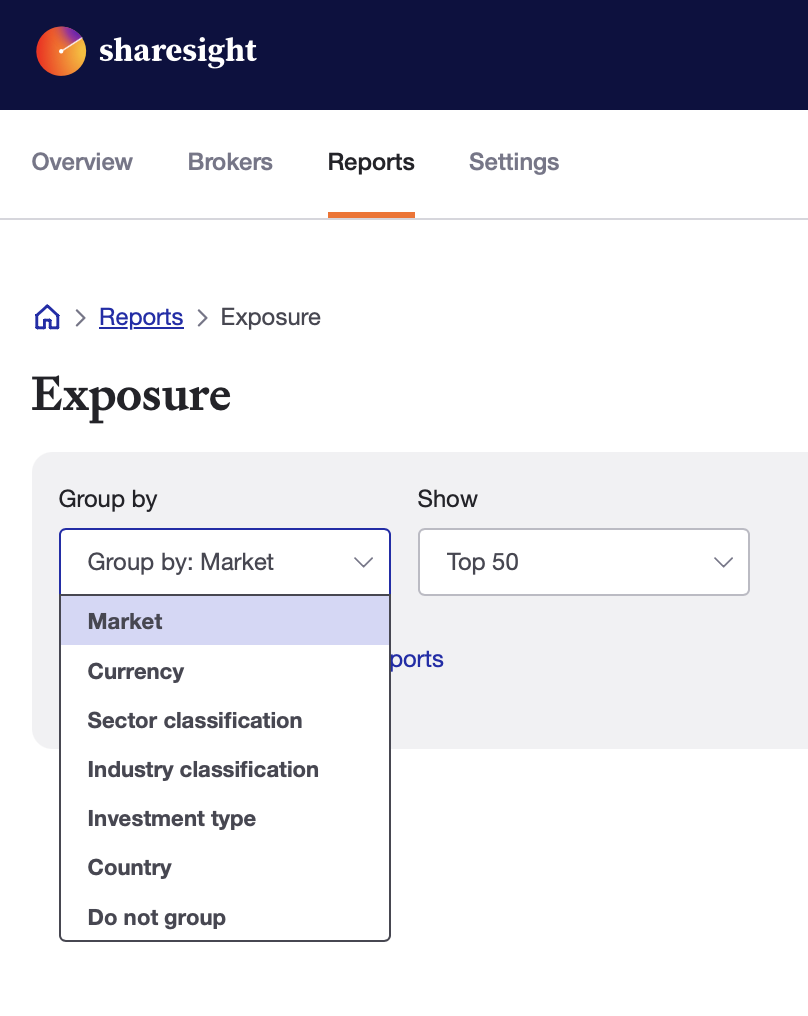
4 — Select the number of underlying holdings you wish to view. The report shows the top 50 - 500 underlying holdings that make up an ETF (only up to 50 underlying holdings are available in the Starter plan).

5 — Click on run report button.
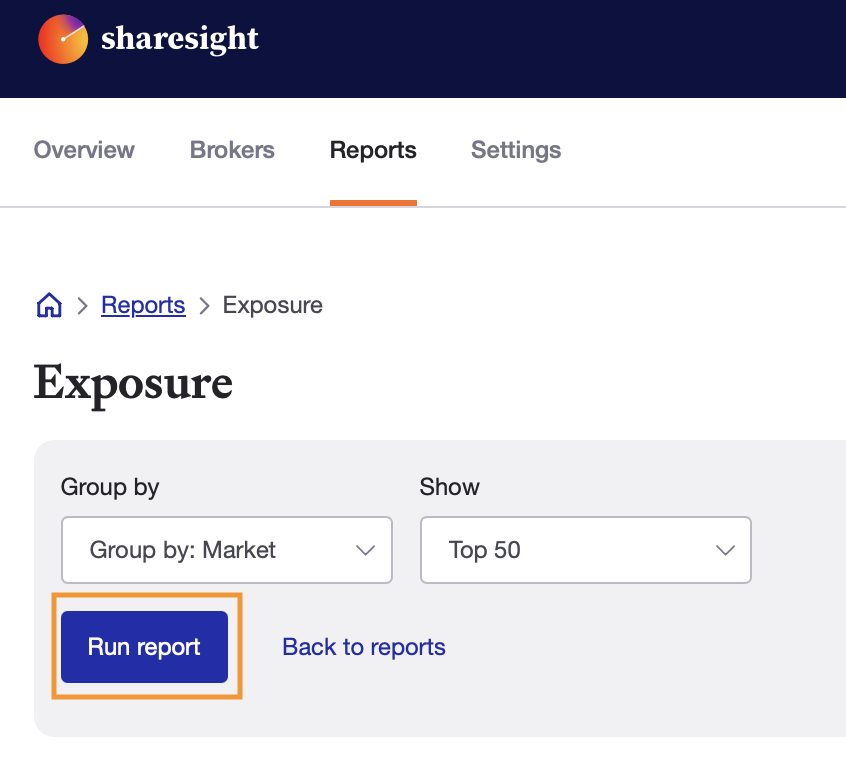
The pie chart and holding table will reload with the selected grouping.
Report overview
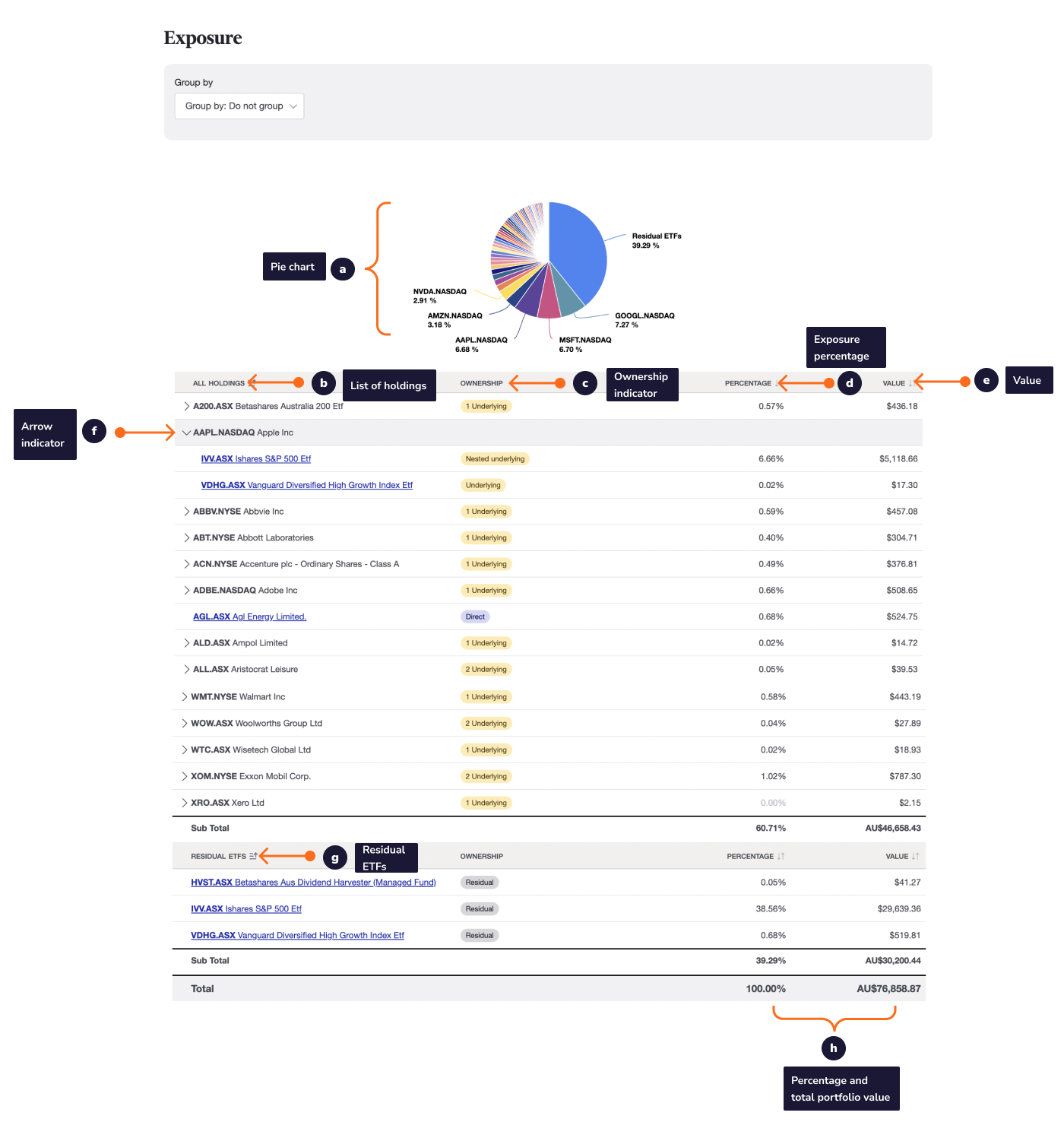
a — The Pie chart - Gives a graphical representation of the portfolio's exposure, depending on the grouping chosen. If 'do not group' is selected, the exposure is shown by each holding. Residual ETF balance which be shown separately.
b — List of holdings - This includes the list of direct and underlying holdings in your portfolio.
c — Ownership indicator:
Direct holdings - the percentage and value of a holding that you have directly invested in. '
Underlying holdings - the percentage and value of an underlying stock held by the respective ETF.
Nested holdings - where the only underlying holding of an ETF is another ETF. For this type of ETF's (example;IVV.ASX and IVV.NYSE), the underlying holdings of the second ETF will be shown with the nested holding badge.
d — Exposure Percentage - the exposure of each stock as a percentage from the current portfolio value.
e — Value - the current portfolio value of the holding.
f — Arrow indicator - to view the exposure of each stock. The directly owned and underlying holding exposure percentage and value will be displayed.
g — Residual ETFs - The report only display up to the top 500 underlying holdings (only up to 50 in the Starter plan) that make up an ETF, the rest of the holdings or any holding that can’t be matched will be grouped under ‘Residual ETF'. This means if any of the underlying holdings are not supported in Sharesight it will also fall under ‘Residual ETF’.
h — Percentage and total portfolio value - The total percentage and the current portfolio value will be displayed at the end of the table.
Note: Click on any column heading to reorder the table by the contents of that column.
Negative Gearing
Negative gearing refers to the ratio of borrowed money invested in the shares.
For example, if GEAR.ASX has a gearing range of 50% - 65%, that means every $1 invested includes $0.50 - 0.65 borrowed money. In the example below, the exposure report has captured all the underlying holdings and the total amount invested is shown as AU$75,729.95. The negative balance of -AU$43,309.95 shown under 'residual ETF' is the amount of borrowed money invested. This results in a negative gearing of 57% (43,309.95/75,729.95) for this ETF.
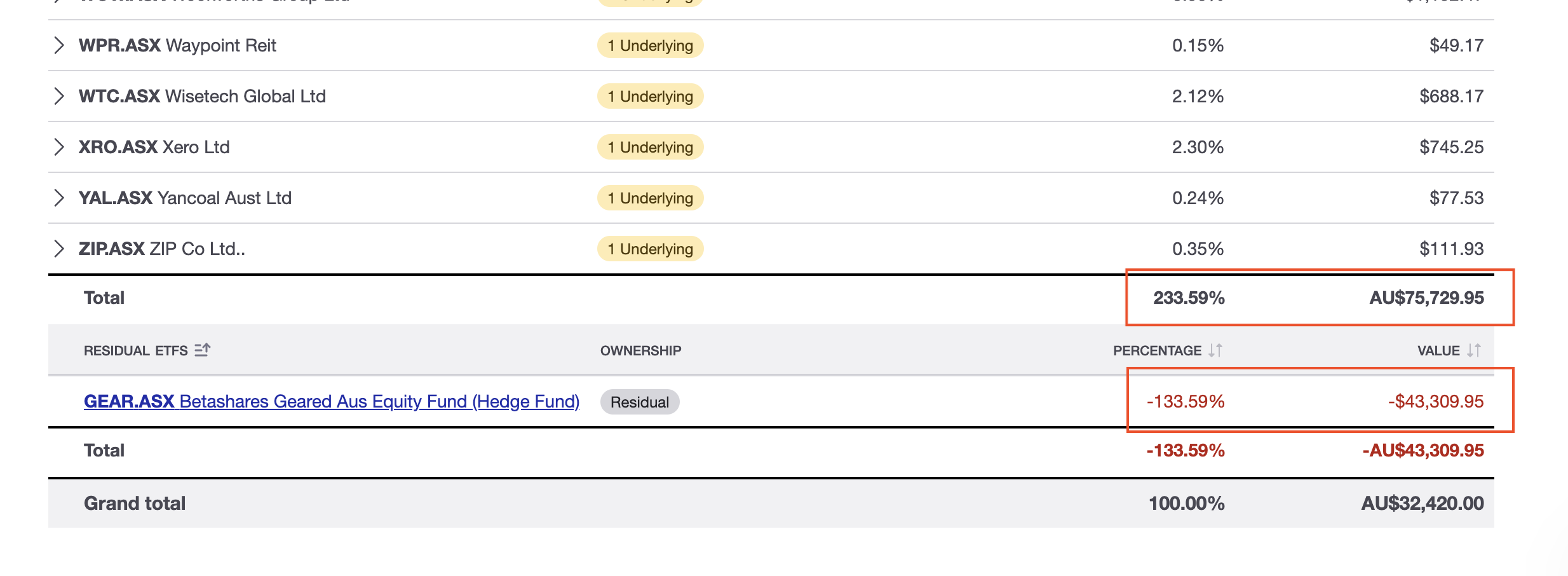
Last updated 16th December 2025